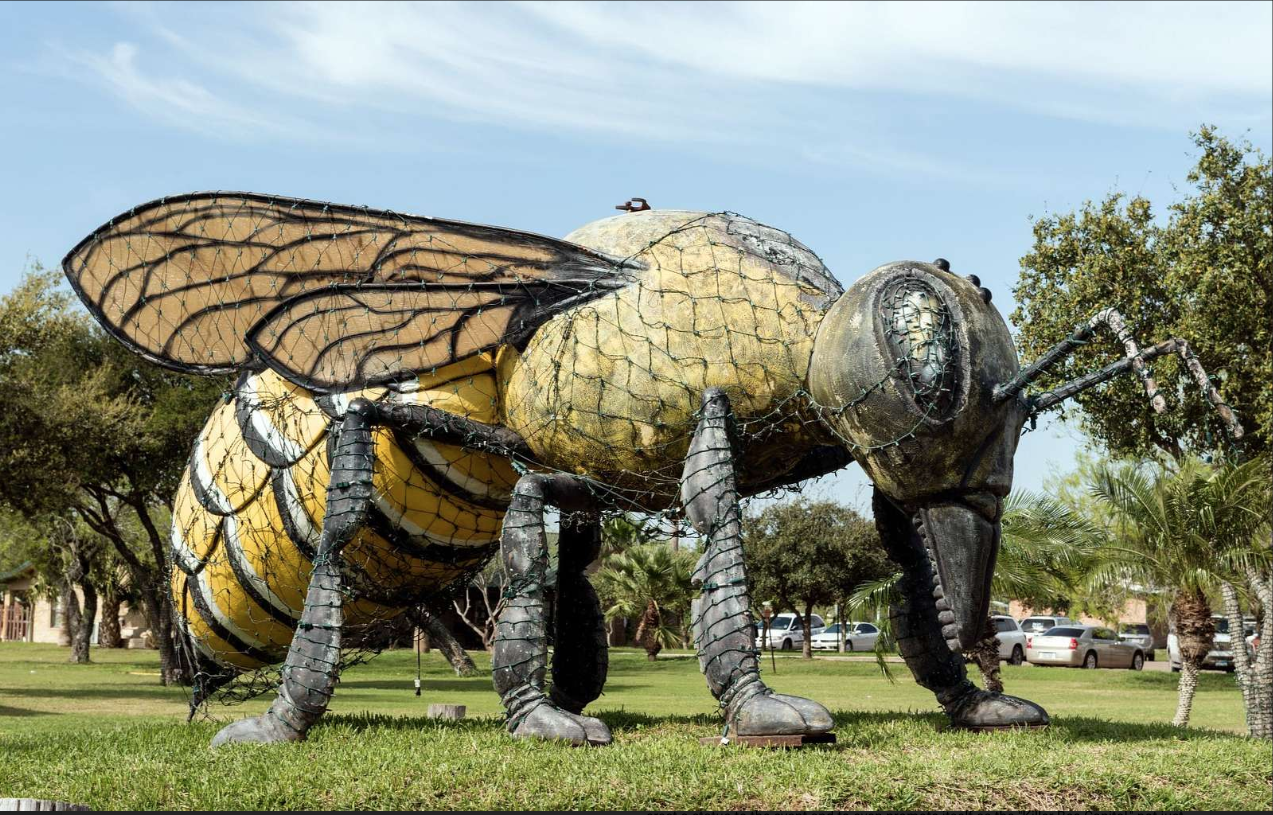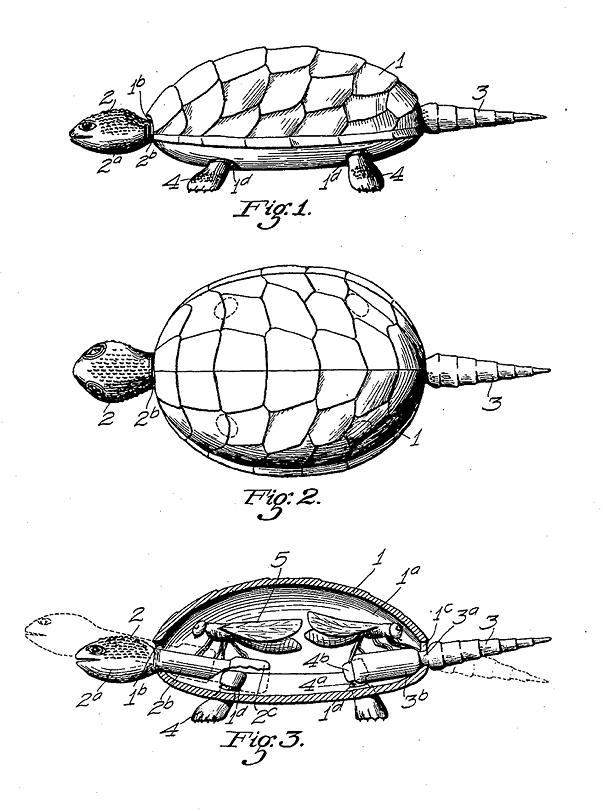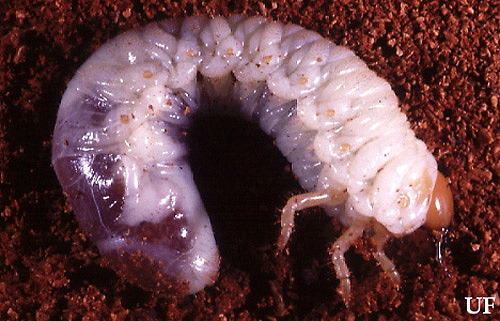Insects and Spiders
The Boll Weevil Monument

The Wikipedia Page.
Posted By: Paul - Sun May 31, 2020 -
Comments (1)
Category: Agriculture, Insects and Spiders, Regionalism, Statues and Monuments
Tarantula security guards
In the mid-1970s, there was a fad among jewelry stores to use tarantulas as security guards. Stores claimed it helped prevent thefts, although tarantulas aren't going to do much to stop a thief, besides looking scary. Rattlesnakes, I imagine, might work better.
La Crosse Tribune - July 19, 1975

Posted By: Alex - Fri May 08, 2020 -
Comments (5)
Category: Crime, Insects and Spiders, 1970s
Removing cockroaches from the ear: a comparative study
Back in 1985, doctors at an emergency room in Pittsburgh were presented with a woman who had somehow got cockroaches in both her ears. The doctors immediately decided this presented a rare opportunity to do a comparative study on methods of removing cockroaches from ears. They reported on their results in the New England Journal of Medicine, "Removing Cockroaches from the Auditory Canal: Controlled Trial," 1985, 312(18): 1197.A patient recently presented with a cockroach in both ears. The history was otherwise noncontributory. We recognized immediately that fate had granted us the opportunity for an elegant comparative therapeutic trial. Having visions of a medical breakthrough assuredly worthy of subsequent publication in the Journal, we placed the time-tested mineral oil in one ear canal. The cockroach succumbed after a valiant but futile struggle, but its removal required much dexterity on the part of the house officer. In the opposite ear we sprayed 2 per cent lidocaine solution. The response was immediate; the roach exited the canal at a convulsive rate of speed and attempted to escape across the floor. A fleet-footed intern promptly applied an equally time-tested remedy and killed the creature using the simple crush method.
However humble the method, and despite our small study population, we think we have provided further evidence justifying the use of lidocaine for the treatment of a problem that has bugged mankind throughout recorded history.
K. O'Toole, M.D.
P.M. Paris, M.D.
R.D. Stewart, M.D.
University of Pittsburgh School of Medicine
R. Martinez, M.D.
Louisiana State University

A subsequent letter to the journal noted a limitation of their report. In many cases, cockroaches get stuck in the ear canal. In which case, they can't just scurry out when sprayed with lidocaine. However, the correspondents offered a method of dealing with this situation. ("Removing cockroaches from the auditory canal: a direct method" NEJM. 1989. 320(5): 322).
As we burst into the room, we could see the young woman writhing from the combined sensations of movement and pain in her ear canal. One of us tok a look, confirming the nurse's diagnosis, while the other filled a 3-cc syringe with 2 percent lidocaine solution. With hurried anticipation we sprayed the drug briskly into the ear canal and quickly jumped back, fully expecting the beast to come hurtling forth at first contact with the noxious substance.
Nothing. "Increase the dosage," we shouted, filling a 10-cc syring. Still nothing. "Get that sucker outa my ear!" the patient screamed. What a brilliant idea! We grabbed a 2-mm metal suction tip and attached it to a wall suction apparatus with a negative pressure of 120 cm of water. Then we gently passed the tip into the ear canal, taking care not to occlude the canal and risk tympanic-membrane barotrauma. Shloop! "Got him!" we exulted. Sure enough, there he was, plastered to the suction tip like a fly to flypaper. After a repeat examination of the canal and a few drops of Cortisporin solution, the patient was on her way.
We recommend suction as a safe and efficacious method for removing insects from the ear canal when other methods fail.
Jonathan Warren, M.D.
Leo C. Rotell, M.D.
State University of New York
Health Science Center
Posted By: Alex - Wed Apr 29, 2020 -
Comments (0)
Category: Insects and Spiders, Medicine, 1980s
Killer Bee Monument

Source, with info.
Posted By: Paul - Tue Mar 17, 2020 -
Comments (1)
Category: Enlargements, Miniatures, and Other Matters of Scale, Insects and Spiders, Regionalism, Statues and Monuments
Albert in Blunderland
This'll get you hep to the real meaning of "socialism."
Posted By: Paul - Wed Mar 11, 2020 -
Comments (1)
Category: Dreams and Nightmares, Government, Insects and Spiders, Money, Work and Vocational Training, Cartoons
Insect Butter
The latest effort to convince everyone to eat insects comes from Ghent University in Belgium where researchers tested whether people could tell the difference between waffles, cookies, and cake made with butter, versus butter combined with fat from black soldier fly larvae.They claimed that a mixture of 75% butter and 25% insect fat was undetectable to people. And, in some cases, even a 50/50 mix of butter/insect fat couldn’t be detected.
So they’re hopeful that bakery products made with insect butter may soon be on shelves. They note:
More info: Ghent University

Posted By: Alex - Wed Feb 19, 2020 -
Comments (2)
Category: Food, Insects and Spiders
Live Beetle Brooch
A living beetle, encased in a silver girdle, worn as a brooch. It was said to be “the rage of high-fashion Europe” in the early 1960s. With proper care, this living brooch supposedly would survive from two to six years.I don't think a beetle would suffer by being worn as a brooch. Would it even care if it was being fed well? Even so, I'm guessing that living jewelry wouldn't go over well nowadays. Though that's no great loss to the world of fashion.



Toronto National Post - Dec 8, 1962
Posted By: Alex - Mon Feb 10, 2020 -
Comments (1)
Category: Insects and Spiders, Jewelry, 1960s
Wasp Face
In 1933, Miss Winifred Mondeau found on her property a wasp’s nest that resembled a human face.
Newport News Daily Press - July 6, 1933
Some googling reveals that there’s a minor genre of wasp (and hornet) nests that resemble faces. The one below, for example, was found in the yard of Brenda Montgomery in 2017. Though it's not as good as the one from 1933.

Posted By: Alex - Sat Feb 08, 2020 -
Comments (4)
Category: Insects and Spiders, 1930s, Pareidolia
Fly-Operated Turtle
Patent No. 1,591,905, granted to Oscar C. Williams of San Diego, CA in 1926, described this curious device.It was a toy turtle. Its body was made of wood or aluminum, while the head, legs, and tail were made from lightweight cork. The user was supposed to insert several flies into the hollow body of the turtle. Their agitations once inside, as they sought to escape, would then cause the movable parts of the turtle to wag from side to side, as if the creature was alive.
I can see several drawbacks. First, you would have to catch some flies and maneuver them (alive) into the turtle. This was done by squeezing them through the leg hole. Handling a fly in this way seems like it could be a challenge.
And once in there, I imagine you'd have to wait until the flies died to get them back out. So, essentially, it was a fly torture device.

Posted By: Alex - Sun Dec 22, 2019 -
Comments (4)
Category: Insects and Spiders, Inventions, Patents, Toys, 1920s
White Grub Broth
The holiday season is upon us. So, what better time to experiment with white grub broth in your cooking. Switch out the usual chicken stock for some white grub broth, and see what your guests think. Or just serve it on its own!
Sioux City Journal - Aug 6, 1922
"I refer to the common white grub. Every small boy who goes fishing is familiar with it, because it makes exceptionally good bait. But even he does not know that it is the larva of the lively and brisk-flying insect which we call the June bug.
"The white grub is good to eat. It makes an excellent broth. Prepared in a salad, like shrimp, in the French fashion, with mayonnaise dressing, it is delicious. White grubs in a stew are first rate, resembling crab meat in flavor.
"I am able to recommend them because recently, in the Department of Agriculture, we have eaten them cooked in various ways. A quantity of them was shipped to Washington from Indiana in glass jars of salty water for the purpose of the experiment, and the job of devising ways to prepare them appetizingly for the table was assigned to the nutrition division of the Office of Home Economics.
"There the experts in practical home cookery took them in hand, removed their entrails and washed them, thus converting them into a raw material as clean and nice as shrimp meat or crab meat. A number of persons, invited to eat the broth, salad and stew made from them, found all three most appetizing. For stew the grubs were heated with a little water, and milk, butter, salt and pepper were added.
"Perhaps you imagine that it would be difficult to collect enough white grubs for table purposes. But that is not so. Over wide areas in the Middle West and elsewhere the soil is full of them. They can be turned up by thousands with a spade in a few minutes."
We can eat worms with zest!

Typical white grub (source: University of Florida entomology & nematology)
Posted By: Alex - Fri Dec 13, 2019 -
Comments (2)
Category: Food, Insects and Spiders

| Who We Are |
|---|
| Alex Boese Alex is the creator and curator of the Museum of Hoaxes. He's also the author of various weird, non-fiction, science-themed books such as Elephants on Acid and Psychedelic Apes. Paul Di Filippo Paul has been paid to put weird ideas into fictional form for over thirty years, in his career as a noted science fiction writer. He has recently begun blogging on many curious topics with three fellow writers at The Inferior 4+1. Contact Us |




